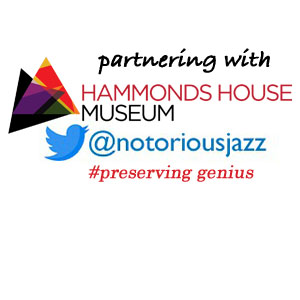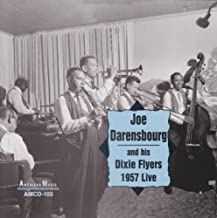
Daily Dose Of Jazz…
Joe Darensbourg was born in Baton Rouge, Louisiana on July 9, 1906 and in his youth moved out to California where he played gigs where he could find them and appeared in several silent films with these bands. In 1950 Joe appeared in Mahogany Magic with Kid Ory’s Creole Jazz Band. The Sixties saw him playing with Louis Armstrong’s All Stars in The Good Years of Jazz: Louis Armstrong & The All Stars.
In 1958 his Dixie Fliers recording of Yellow Dog Blues hit #43 on the pop charts, and Louis Armstrong’s version of Hello Dolly, which Drensburg played clarinet went to #1 in 1964. By the Sixties he performed on a television special with the All Stars Winter Carnival in Sun Valley, California and a March of Dimes tribute to Louis Armstrong.
He was noted for his work with Buddy Petit, Jelly Roll Morton, Charlie Creath, Fate Marable, Andy Kirk, Johnny Wittwer, Kid Ory, Wingy Manone, Joe Liggins and Louis Armstrong. Clarinetist and saxophonist Joe Darensbourg, who played Dixieland, passed away on May 24, 1985.More Posts: clarinet,history,instrumental,music,saxophone
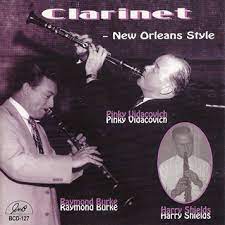
Daily Dose Of Jazz…
Harry Shields was born on June 30, 1899 at 2319 First Street in Uptown, New Orleans, Louisiana, two doors down from Buddy Bolden’s house. He spent almost his whole career in New Orleans. He played with the bands of Norman Brownlee, Sharkey Bonano, Tom Brown, Johnny Wiggs, and others.
Many of his fellow musicians regarded Harry as a superior clarinetist to his brother Larry, who became a noted musician. Wiggs had once commented that Harry was the only clarinetist he’d heard who could always play the right note without fail. He was a part of George Girard and His New Orleans Five, and Johnny Wiggs and His New Orleans Band.
Clarinetist Harry Shields passed away in his hometown on January 19, 1971.
More Posts: clarinet,history,instrumental,jazz,music
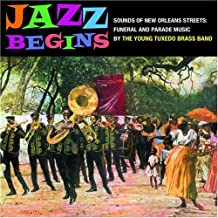
Daily Dose Of Jazz…
Herman Edward Sherman, Sr. was born in New Orleans, Louisiana on June 28, 1923. He played clarinet in high school and later picked up the alto and tenor saxophone. He began working with brass bands on the New Orleans jazz scene around 1940, playing in the Eureka Brass Band, the Onward Brass Band, and the Young Tuxedo Brass Band.
Taking over the leadership of the Young Tuxedo Brass Band in 1971, he remained for the rest of his life. During his tenure the group toured the United States repeatedly and performed in Berlin, Germany in 1980. He led the ensemble in the studio for their 1983 release Jazz Continues on 504 Records.
Occasionally he played in dance bands, but concentrated on his work in brass bands. Saxophonist and bandleader Herman Sherman passed away on September 10, 1984 in his hometown.
More Posts: bandleader,history,instrumental,music,saxophone
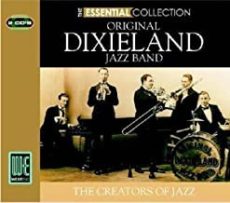
Daily Dose Of Jazz…
Antonio Sparbaro was born on June 27, 1897 in New Orleans, Louisiana to an immigrant Sicilian family. Early in his career he played with the Frayle Brothers Band, possibly as early as 1911, and the Reliance Band of Papa Jack Laine. He did side work with Merritt Brunies and Carl Randall.
He joined the Original Dixieland Jass Band for their initial recordings in 1917 and he became its leader in the 1940s, remaining a member of the ensemble until its dissolution in the 1960s. He was the only founding member still in the group at that time. Sbarbaro composed for the group, writing the tune Mourning Blues among others. He remained a fixture of Dixieland jazz performance for most of his life. He played later in life in New Orleans with Miff Mole, Big Chief Moore, Pee Wee Erwin, and Eddie Condon.
He played at the New York World’s Fair in 1941 and with Connee Boswell in the 1950s. Quitting music in the 1960s due to the popularity of rock & roll, drummer Tony Sparbaro, known professionally as Tony Sbarbaro or Tony Spargo, passed away on October 30, 1969 in New York City. He was the drummer of the Original Dixieland Jass Band for over 50 years and their tune Darktown Strutters’ Ball was inducted into the Grammy Hall of Fame in 2006
More Posts: drums,history,instrumental,jazz,music
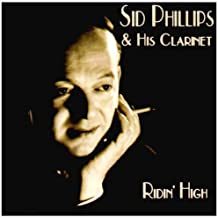
Daily Dose Of Jazz
Sid Phillips was born Isador Simon Phillips on June 14, 1907 in London, England into a Jewish family. He learned violin and piano as a child, and played reeds in his teens as a member of his brother’s European band. He got his start in the music business as a publisher and director for Edison Bell.
In 1930, Phillips began writing arrangements for Bert Ambrose, and joined Ambrose’s ensemble in 1933, remaining there until 1937. Towards the end of the decade he was playing in the United States on radio and freelancing in clubs.
During World War II, Sid served in the Royal Air Force, then put together his own quartet in 1946 and wrote several pieces for the BBC Symphony Orchestra. He led a Dixieland jazz band of his own formation from 1949, and his sidemen variously included George Shearing, Colin Bailey, Tommy Whittle, and Kenny Ball.
Phillips’s first recordings under his own name were made in 1928. In 1937 through 1938, a number of his recordings were issued in the United States, through a contract he signed with Irving Mills and issued on Mills’ Variety label, as well as Vocalion, Brunswick and Columbia labels, though most of his recordings were made in England.
Clarinetist, arranger and bandleader Sid Phillips, who continued to record as a leader well into the 1970s, passed away on May 23, 1973 at aged 65 in Chertsey, Surrey, England.
More Posts: arranger,bandleader,clarinet,history,instrumental,jazz,music



